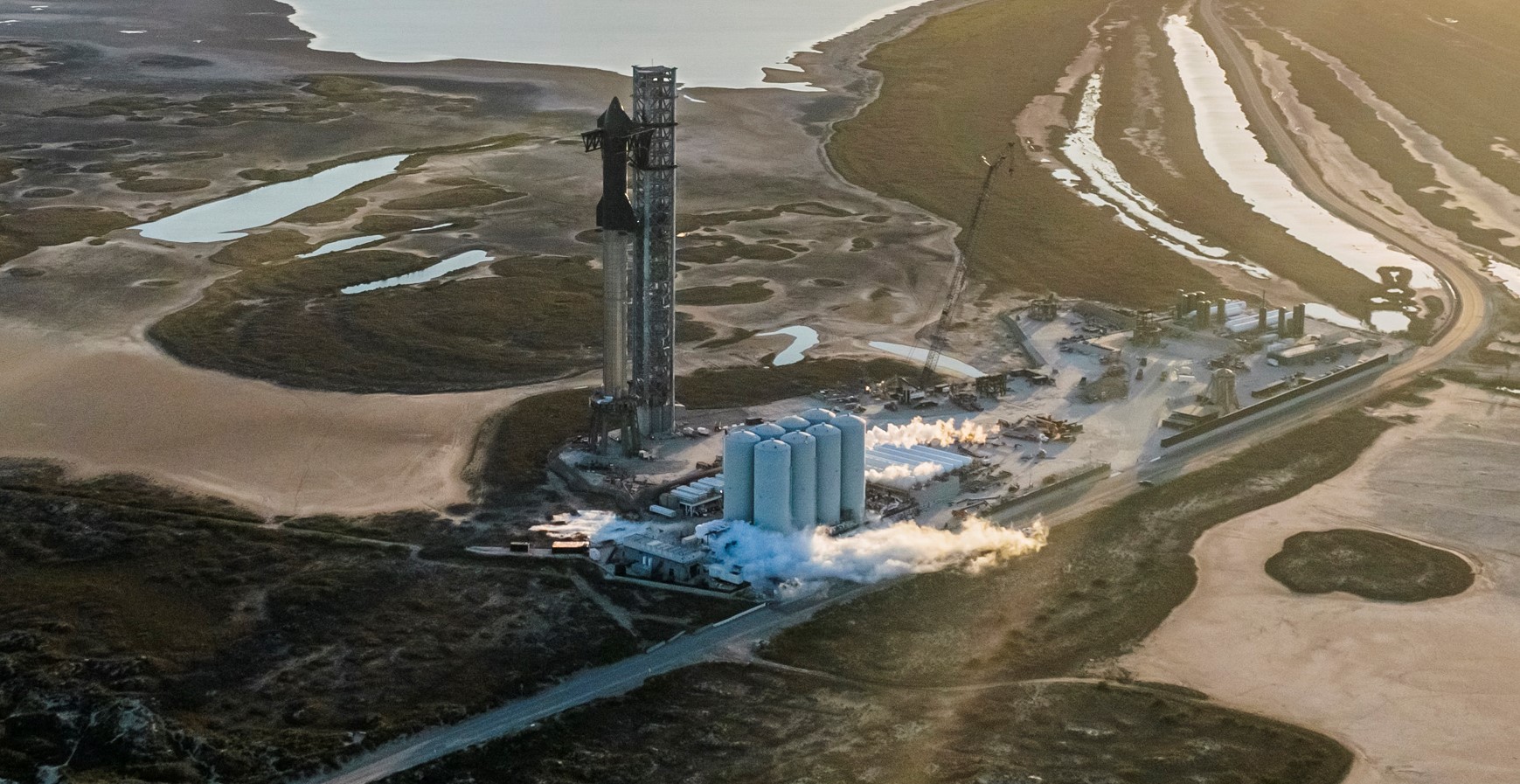

News
SpaceX’s Starbase environmental review suffers third delay
The Federal Aviation Administration (FAA) has announced that the completion of a crucial ‘environmental assessment’ SpaceX needs to begin orbital-class Starship launch attempts out of South Texas has been delayed for the third time.
Official known as a programmatic environmental assessment or PEA, the FAA says it started the process in late June 2021 with the goal of verifying that SpaceX’s Starbase orbital launch site (OLS) was mostly benign before the end of 2021. Compared to a regular EA, the programmatic nature of SpaceX’s Starbase review would theoretically allow the company to start small and gradually expand and add new facilities and capabilities without having to restart the arduous review process for each change.
Along those lines, SpaceX’s first draft PEA requested permission for no more than five full-stack Starship launches per year compared to the maximum of 12 Falcon 9 launches or nine Falcon 9 and three Falcon Heavy launches out of Boca Chica that SpaceX had already received permission for from the FAA in 2014.
Unfortunately, even at the time that the start of the process was announced, completing a full PEA in half a year was already unbelievably optimistic. No comparable review, of which there are effectively none, has been completed anywhere close to that quickly. In the face of substantial local opposition, like in the case of Georgia’s Camden Spaceport, even an FAA environmental review for a relatively small rocket launch facility can make little progress after years of tooth-and-nail fighting.
However, the best possible comparison has always been SpaceX’s own environmental assessment for an almost identical orbital-class Starship launch site at Florida’s Kennedy Space Center. Despite the fact that no untouched ground would be broken and even with the apparent might of NASA behind it, it took the FAA and SpaceX about a full year to complete a Pad 39A EA for up to 24 Starship launches per year. As such, the idea that the FAA would be able to complete a PEA for Boca Chica Starship launches in six months was always almost unimaginable.
It should come as no surprise, then, that nine months after SpaceX and the FAA began their Starbase PEA, they appear to be only marginally closer to completing the review. Days before the original December 31st, 2021 deadline, the FAA announced a delay to February 28th, 2022. On February 14th, the FAA announced a second delay to March 28th. Most recently, on March 25th, the FAA announced a third delay to April 29th.
Put simply, the FAA is effectively saying that it is actually further away from completing SpaceX’s South Texas Starship PEA than it was in December 2021. The extraordinarily opaque nature of the process also means that anyone outside of the loop or without internal sources is left to simply guess what is causing those delays or why the FAA keeps pushing the goalposts back just one or two months at a time when it’s unclear that anyone can actually predict when the process will be completed.
Without journalists filing Freedom of Information Act (FOIA) requests, the full extent of public knowledge about what is causing those delays would be the FAA’s scant few statements on the process. The most valuable information provided thus far is that the FAA is “reviewing the Final PEA,” which does seem to imply some degree of progress. Nonetheless, the agency still included a boilerplate statement noting that it’s “completing consultation and coordination with agencies at the local, State, and Federal level,” making it hard to actually say if any progress has been made. In February 2022, the FAA said it was “continuing consultation and coordination with other agencies.”
In December 2021, the FAA stated that it was “continuing consultation and coordination with other agencies at the local, State, and Federal level” while “SpaceX continues to prepare the Final PEA for…FAA review and acceptance.” By using such vague and unspecific language, the FAA makes what little it does say virtually impossible to parse and barely better than nothing. Solely thanks to documents secured through FOIA, we know that the FAA itself may not actually be to blame for most or all of the PEA’s four months of delays.
Instead, the US Department of the Interior (DOI), Fish and Wildlife Services (FWS), and National Park Services (NPS) may be partially responsible through their required coordination with the FAA, which they appear to be taking full advantage of to exert some form of control over the outcome. Bureaucrats are being bureaucratic, in other words.
Outside of email chains and boardrooms, however, it’s no longer clear that completing the PEA and securing an FAA launch license are the limiting factor for the first orbital Starship test flights. SpaceX CEO Elon Musk recently announced that SpaceX is changing the prototypes assigned to the first full-stack launch – likely to Booster 7 and Ship 24. Super Heavy B7 has yet to begin any kind of testing and Starship S24 is still in several pieces, so it’s safe to say that SpaceX’s new pair are months of concerted testing away from launch readiness.
If anything goes wrong during those tests, any significant design issues are discovered, or any damage is caused, it’s entirely possible that what Elon Musk says could take as few as two months will actually take more like four to six. Only time will tell. For now, the FAA likely has a few months before Starship’s South Texas PEA and full-stack launch license truly become the limiting factor for the rocket’s first orbital launch attempt.
Elon Musk
Elon Musk confirms Grok 4 launch on July 9 with livestream event
The rollout will be accompanied by a livestream at 8 p.m. Pacific Time.
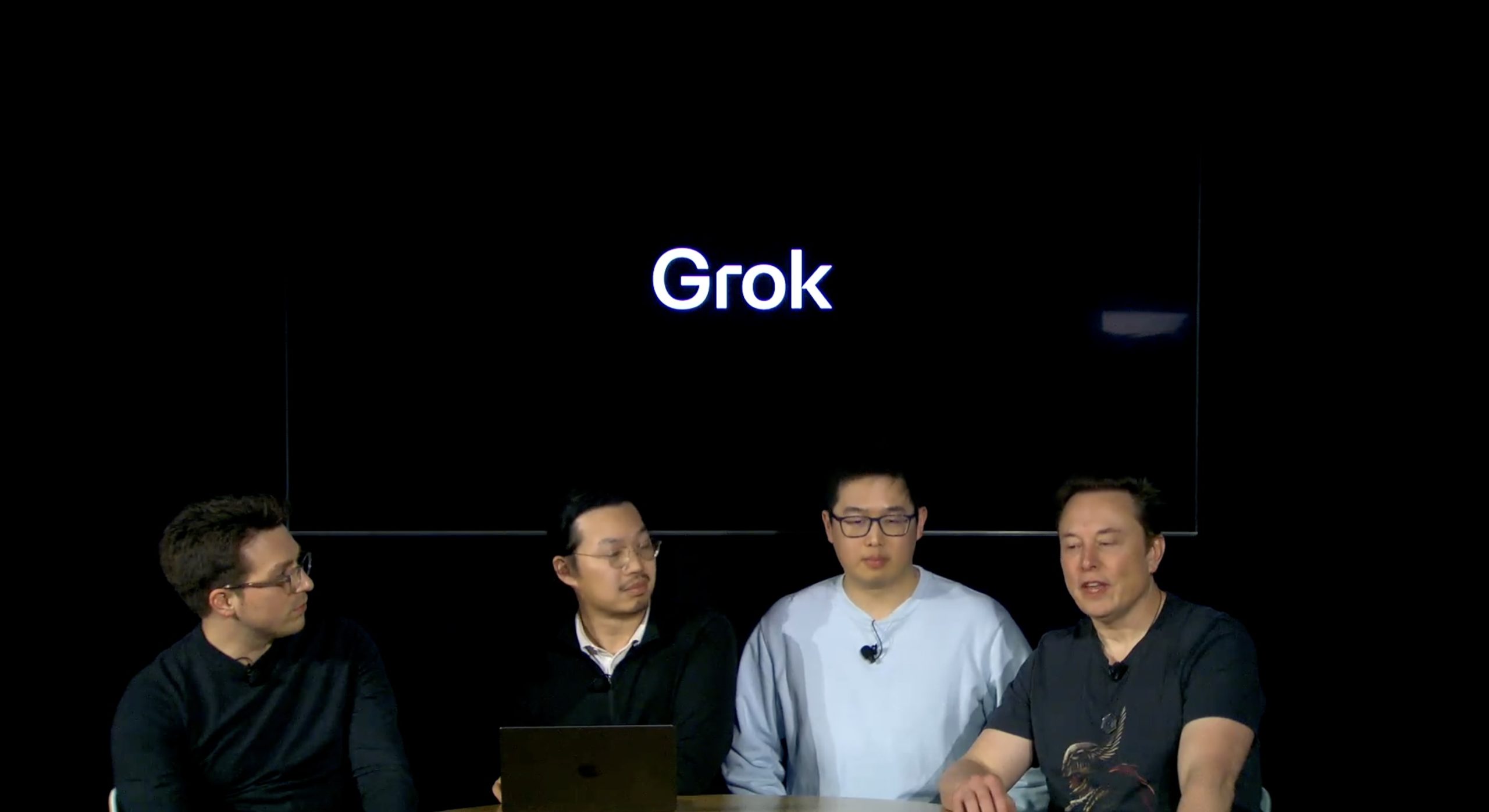
Elon Musk has officially confirmed that Grok 4, the latest version of xAI’s large language model, will launch on July 9. The rollout will be accompanied by a livestream at 8 p.m. Pacific Time, hosted on xAI’s official account on X.
xAI goes straight to Grok 4
Back in May, leaks indicated that xAI was getting ready to ship Grok 3.5. Considering Musk’s recent comments, however, it appears that the artificial intelligence startup would be focusing on the large language model’s fourth iteration instead. As noted in a Financial Express report, users on X have sighted references to Grok 4 in the lead up to the update’s launch, such as “grok-4-prod-mimic” and “Grok 4 Code.”
Musk’s Grok 4 announcement comes as AI competition intensifies between major players including OpenAI, Google, and xAI. With Musk’s Colossus supercomputer fully operational in Memphis, xAI appears to be accelerating its AI product roadmap.
Musk pushes Grok toward political neutrality
Grok 4’s launch also follows a recent controversy involving political bias, as noted in a CNN report. Last week, Grok responded to a user on X stating that political violence in the U.S. since 2016 had come more from the political right than the left. The chatbot noted in a later reply that its answer was based on information from sources like Reuters, the Journal of Democracy, and University of Maryland studies.
Musk stated that Grok’s response was a “major fail.” “Major fail, as this is objectively false. Grok is parroting legacy media. Working on it,” he wrote in a post on X. By the end of June, Musk noted that he was “grinding all night with the xAI team” and that they were making “good progress.” He also stated that the model “Will be called Grok 4. Release just after July 4th. Needs one more big run for a specialized coding model.”
News
Tesla opens massive solar Supercharger station in California
The Supercharger opened to customers ahead of Fourth of July weekend, while Tesla continues phase two of construction on the site.

Tesla has officially launched the first several Supercharging posts at a massive station in California, notably including solar canopies and grid-scale batteries to offer completely renewable charging.
Last week, Tesla announced on X that it opened the first 84 Supercharger stalls of a planned 168-stall station in Lost Hills, California. Additionally, the massive Supercharger project features 11MW of solar canopies and 10 Megapack batteries for off-grid charging powered entirely by solar energy.
Tesla completed the first phase of the project just days ahead of the busy Fourth of July holiday weekend, adding that initial construction took just eight months. In addition to the remaining charging stalls, Tesla says it’s building a set of lounge areas, renderings of which can be seen below alongside current photos of the site.
Notably, the site also includes V4 charging posts for the company’s latest available charging speeds, and it’s located near the busy junction between I-5 and Highway 46 in Kern County.
“Thank you [Kern County] and [PG&E] for collaboration and approvals,” Tesla wrote in a follow-up post.
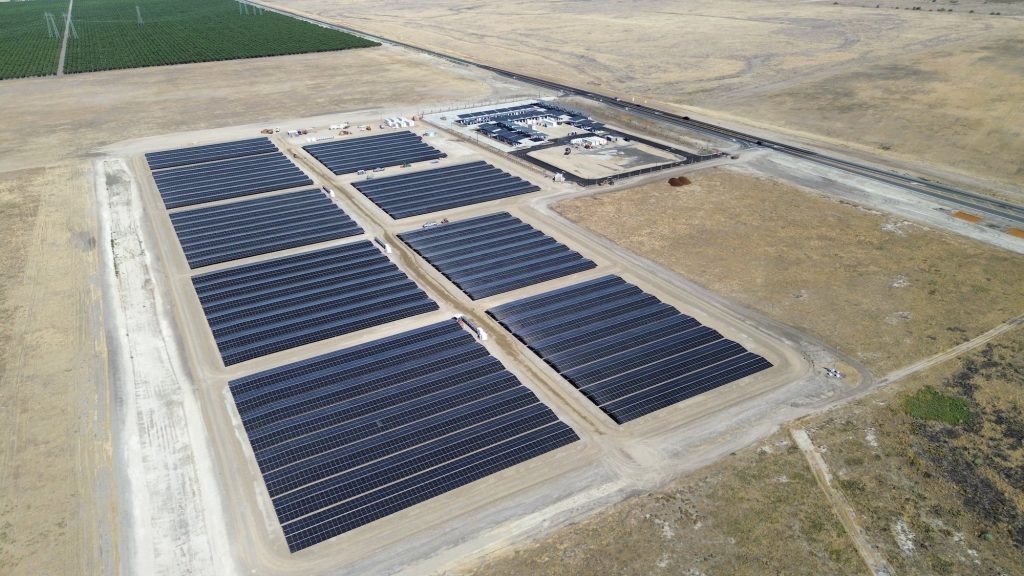
Credit: Tesla Charging | X
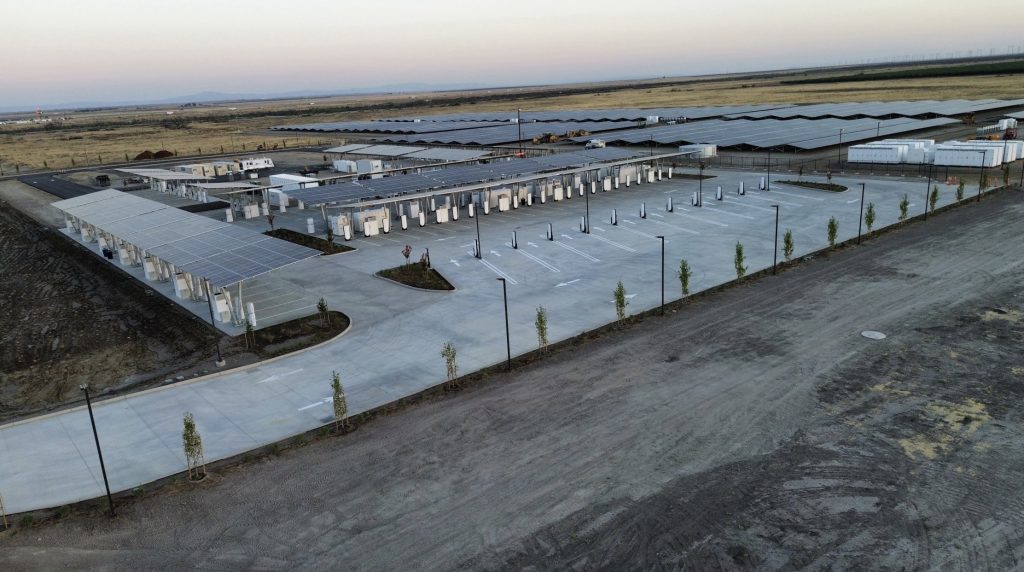
Credit: Tesla Charging | X
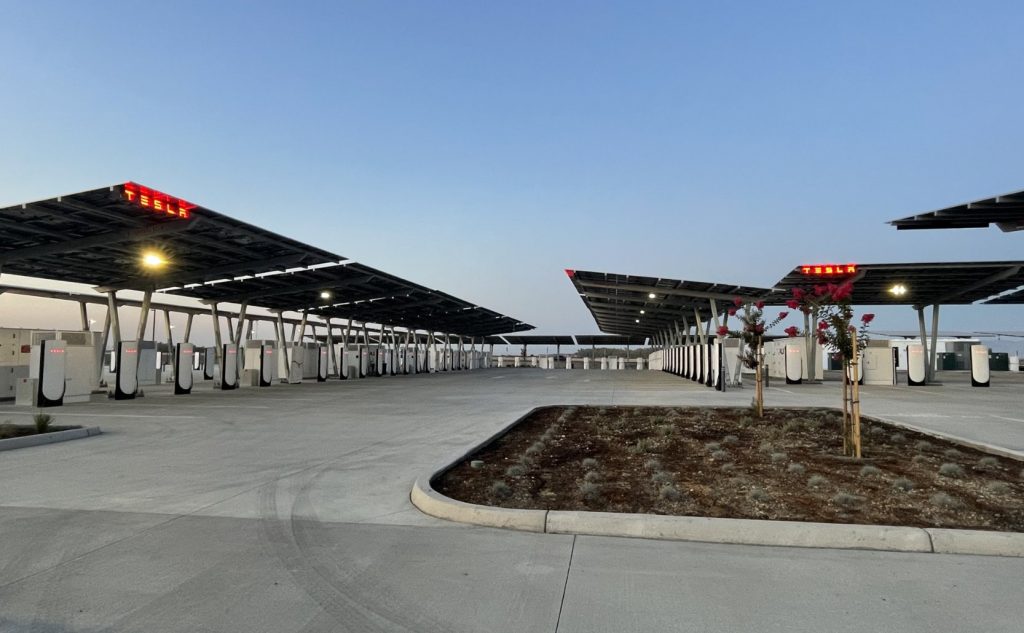
Credit: Tesla Charging | X
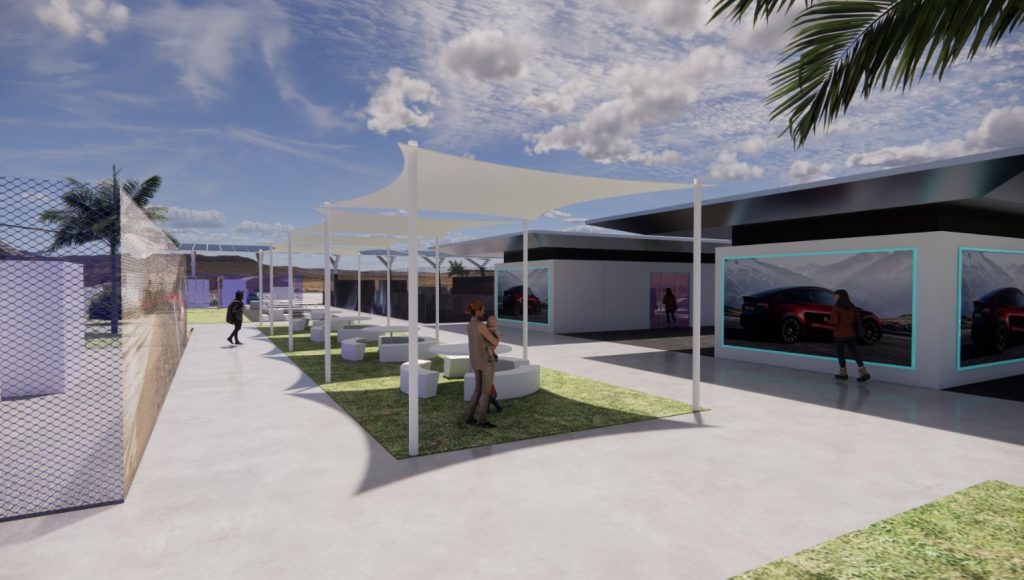
Credit: Tesla Charging | X
Tesla Supercharger Maps for North America, Europe, and Asia pic.twitter.com/0U5r0XRPyo
— TESLARATI (@Teslarati) July 2, 2025
READ MORE ON TESLA SUPERCHARGERS: Tesla launches ultra-fast V4 Superchargers in China for the first time
Testing at the LA Diner, plus Musk update on potential Tesla solar Gigafactory
The huge Tesla Supercharger station completed phase one of construction fairly quickly, especially given how long Tesla has been working on its unique Los Angeles diner, drive-in, and Supercharger location. Still, the company was seen performing some testing at the nearly-completed charging station earlier this month, and will reportedly be holding a job fair.
Elon Musk also responded on Monday morning to a post on X, suggesting that Tesla is “thinking about” building a U.S.-based solar Gigafactory in order to help support increased power needs with AI growth, and to bolster domestic solar production.
Tesla is building a new UFO-inspired Supercharger in the heart of Alien country
News
Tesla driver walks away from major accident with minor injuries
The driver sustained only minor injuries, and the exact cause of the crash remains under investigation.
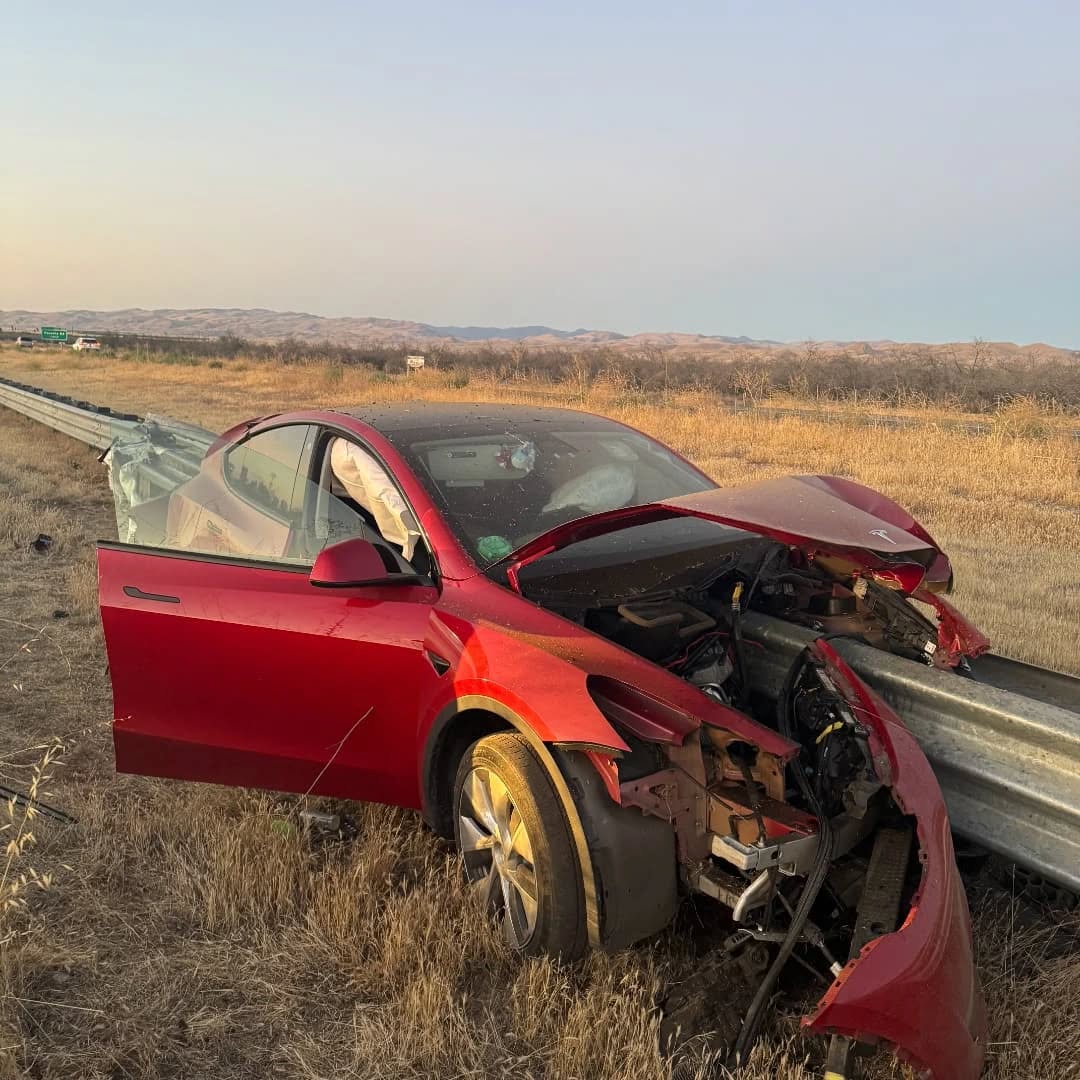
The driver of a Tesla Model Y survived and walked away from a harrowing accident on Monday in California, only sustaining minor injuries despite the vehicle being impaled by a guardrail.
On Monday morning around 4:34 a.m., the Los Banos division of the California Highway Patrol (CHP) responded to the accident on I-5 near Panoche Road, involving a 23-year-old in a Tesla Model Y. According to a post on social media, the driver veered off the road for unknown reasons in the northbound lane, before crashing directly into the guardrail and impaling the vehicle.
You can read the full message and photos from Los Banos CHP below, as were shared in a Facebook post on Monday afternoon.
This morning a Tesla model y was traveling in the #1 northbound lane of I-5 north of Panoche Rd. For unknown reasons driver allowed V-1 to veer off the roadway, travel through a dirt center divide, and crashed into the fixed metal guardrail. Lucky for the driver he only sustained minor injuries and was able to walk away. Driving a vehicle requires 100% attention to the road. Avoid distractions and focus on driving.

Credit: CHP Los Banos (via Facebook)
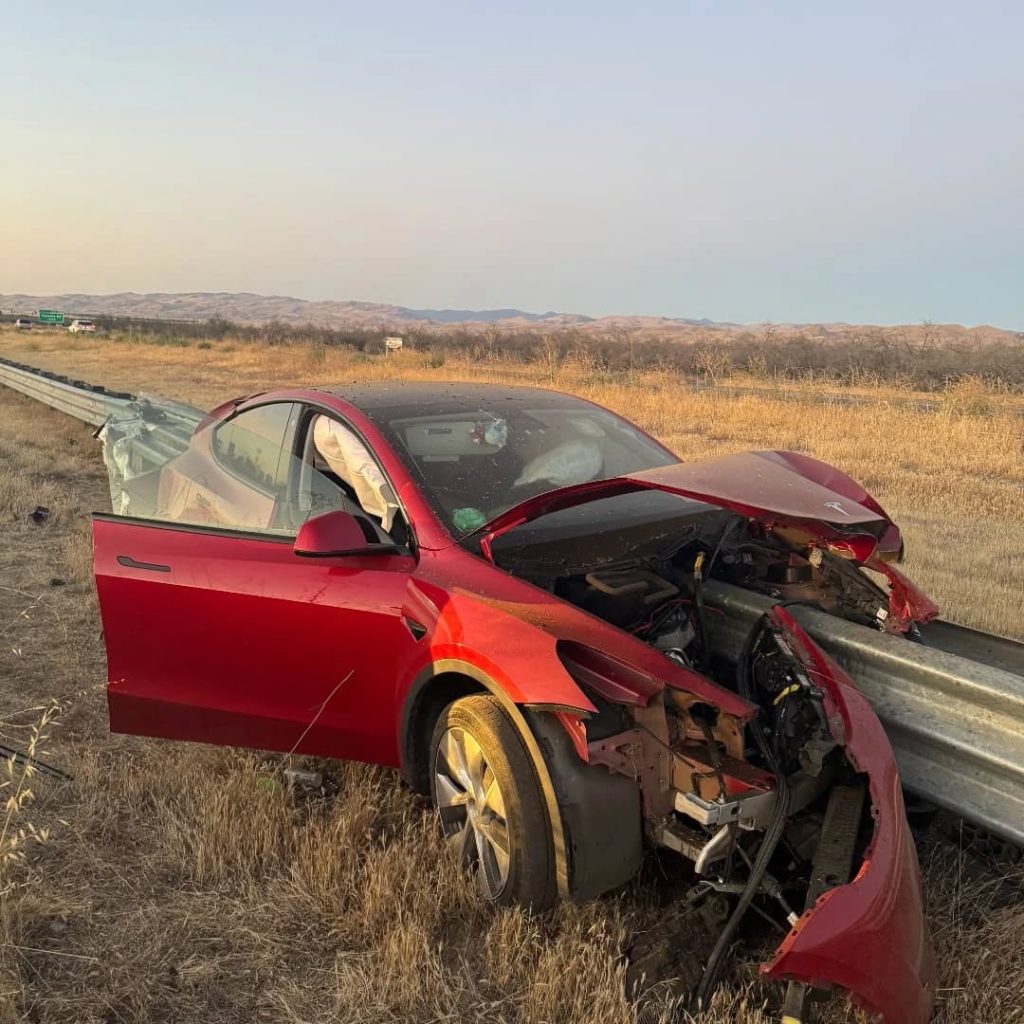
Credit: CHP Los Banos (via Facebook)

Credit: CHP Los Banos (via Facebook)
In a statement to SFGate, CHP officer Myles Anderson said that the driver only sustained minor injuries, while no arrests are made and drugs and alcohol are not suspected to have been involved. The report also notes that Tesla’s “cruise control and lane assistance features” were activated, according to Anderson. However, it’s not entirely clear if this is referring to Supervised Full Self-Driving (FSD), or to the cruise control and lane assist features baked into Autopilot.
At the time of writing, CHP has not yet responded to Teslarati’s request for clarification and additional details on the matter.
Tesla Crash Safety Ratings across its lineup: pic.twitter.com/ny30R7ceji
— TESLARATI (@Teslarati) July 1, 2025
READ MORE ON TESLA SAFETY: Tesla rolls out crucial new safety feature aimed at saving children
The news comes after Tesla has touted its vehicles as incredibly safe for many years. In December, for example, the company highlighted receiving top safety scores from regulators on four different continents throughout the world, including from the National Highway Traffic Safety Administration (NHTSA) and the Insurance Institute of Highway Safety (IIHS) in the U.S.
Tesla has also listed the goal of making its vehicles the safest on the road throughout the years, both in the overall design of its vehicles and in its Autopilot and Full Self-Driving (FSD) programs.
Tesla Model 3 ranks as the safest new car in Europe for 2025, per Euro NCAP tests
-

 Elon Musk1 week ago
Elon Musk1 week agoTesla investors will be shocked by Jim Cramer’s latest assessment
-

 News2 weeks ago
News2 weeks agoTesla Robotaxi’s biggest challenge seems to be this one thing
-

 News2 weeks ago
News2 weeks agoWatch the first true Tesla Robotaxi intervention by safety monitor
-

 Elon Musk2 weeks ago
Elon Musk2 weeks agoA Tesla just delivered itself to a customer autonomously, Elon Musk confirms
-

 News2 weeks ago
News2 weeks agoTesla Robotaxi rollout proves that Elon Musk still delivers, even if it’s late
-

 Elon Musk2 weeks ago
Elon Musk2 weeks agoxAI welcomes Memphis pollution results, environmental groups push back
-
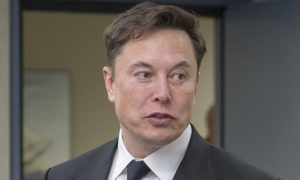
 Elon Musk2 weeks ago
Elon Musk2 weeks agoElon Musk commends Tesla team on successful Robotaxi launch
-

 Elon Musk2 weeks ago
Elon Musk2 weeks agoElon Musk confirms Tesla Optimus V3 already uses Grok voice AI


















